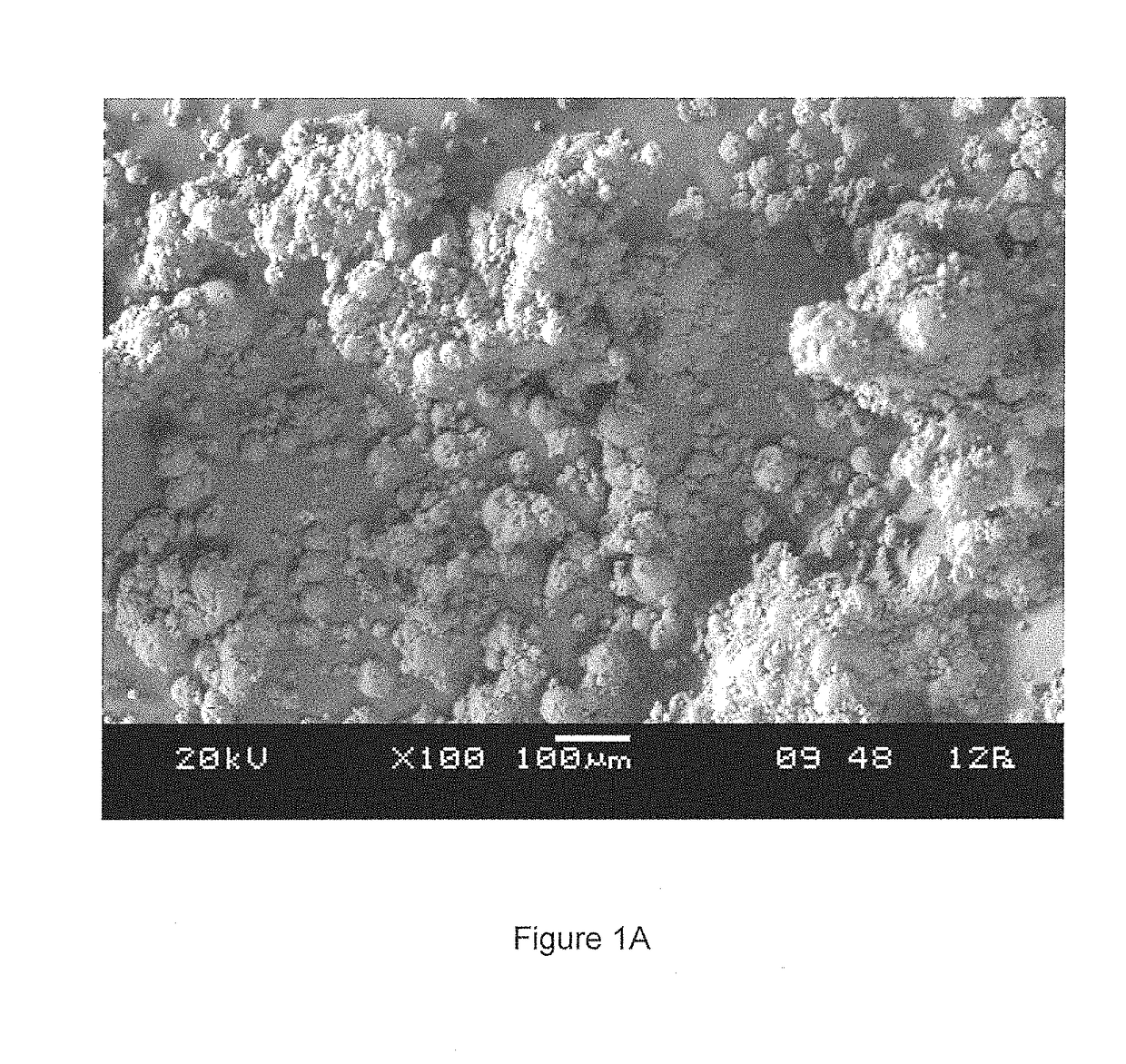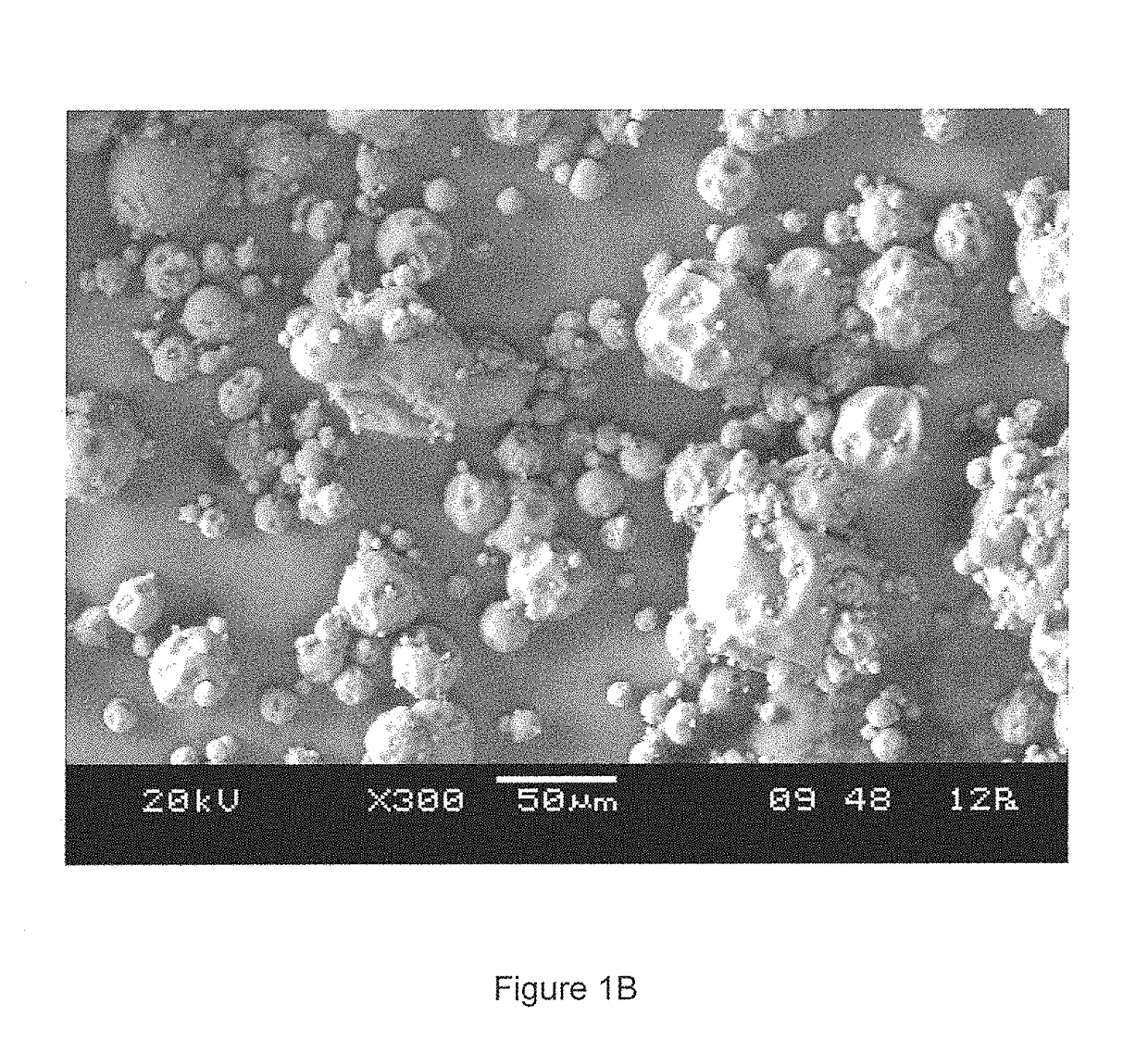Flavor Encapsulation Using Electrostatic Atomization
a technology of electrostatic atomization and flavor, which is applied in the direction of detergent compounding agents, lighting and heating apparatus, furnaces, etc., can solve the problems of requiring heat energy to induce proper carrier film, affecting the flavor quality of the flavor, so as to facilitate the conversion process, facilitate the drying or desolvation of water, and reduce the amount of heat energy required
- Summary
- Abstract
- Description
- Claims
- Application Information
AI Technical Summary
Benefits of technology
Problems solved by technology
Method used
Image
Examples
examples 1 and 2
Materials and Methods:
[0031]An example formulation was prepared to evaluate the effects of the low temperature spray dry process of the present technology compared to a conventional, high temperature spray dry process. The formulation contained 80 parts by weight of OSAN-starch (Hi-Cap™100, National starch and Chemical Co.) as the wall material, and 20 parts by weight of orange oil (Orange Oil C.P. VALENCIA FCC, CITRUS AND ALLIED ESSENCES) as the core material. An emulsion was prepared by emulsifying the orange oil with pre-hydrated OSAN-starch (Hi-Cap™100) by using a high shear mixer (Charles Ross & Son company, Model: HSM-100LSK, Ser #: 205756) at 5,000 rpm for 5 minutes.
Sample Made by Conventional Spray Dry (Control Sample 1)
[0032]The emulsion made by the process as described above was sprayed into a mini spray dryer using nitrogen gas as the delivery gas (Büchi® Mini Spray Dryer, B-290, Switzerland) with emulsion feed rate at 15 ml / minute, air pressure at 50 psi and airflow rate...
examples 3-4
Materials and Methods:
[0048]The electrostatic spray dry process was applied to different encapsulation materials (gum acacia, Instant gum, Alland & Robert, France) instead of the OSA-starch used in Example 1 and Example 2. The formulation contained 80 parts of gum acacia, as the wall material, and 20 parts of orange oil (Orange Oil C.P. VALENCIA FCC, CITRUS AND ALLIED ESSENCES) as the core material. The emulsion was prepared by the method described above. The conventional spray dry sample (Control sample 2) was made by the same process as Control sample 1 as described previously. The process utilized to prepare Example 1 and Example 2 was utilized to prepare Example 3 (at 40° C.) and Example 4 (at 90° C.).
TABLE 6Processing Parameter and Observation:Control #2Example #3Example #4Processing parameters:Encapsulation MaterialGum acaciaGum acaciaGum acacia(Instant gum)(Instant gum)(Instant gum)Flavor Material1-fold orange oil1-fold orange oil1-fold orange oilSpraying nozzleStandard dual-...
example 5
[0052]The electrostatic spray dry process was utilized with the same OSA-starch formulation used in Example 1 and Example 2, except the processing temperature was set at 25° C. for the inlet temperature and 25° C. for the outlet temperature. The other process parameters were the same as previous Examples. The finished sample was collected as a free-flowing dry powder.
Result and Observation
[0053]The hydration property was investigated using the Example 5 product and the Control sample 1 product. A 10 g sample of each product was introduced into 100 ml water (temperature at 25° C.) with continuous agitation at 250 rpm with a stir bar. The dissolving property was monitored. The Example 5 product provided faster hydration compared to the control sample, and no particles were observed floating on the surface after 30 seconds of stirring. In contrast, the Control sample 1 product was slow to hydrate, and still had significant product floating on the surface after 30 seconds of stirring.
PUM
 Login to View More
Login to View More Abstract
Description
Claims
Application Information
 Login to View More
Login to View More - R&D
- Intellectual Property
- Life Sciences
- Materials
- Tech Scout
- Unparalleled Data Quality
- Higher Quality Content
- 60% Fewer Hallucinations
Browse by: Latest US Patents, China's latest patents, Technical Efficacy Thesaurus, Application Domain, Technology Topic, Popular Technical Reports.
© 2025 PatSnap. All rights reserved.Legal|Privacy policy|Modern Slavery Act Transparency Statement|Sitemap|About US| Contact US: help@patsnap.com



